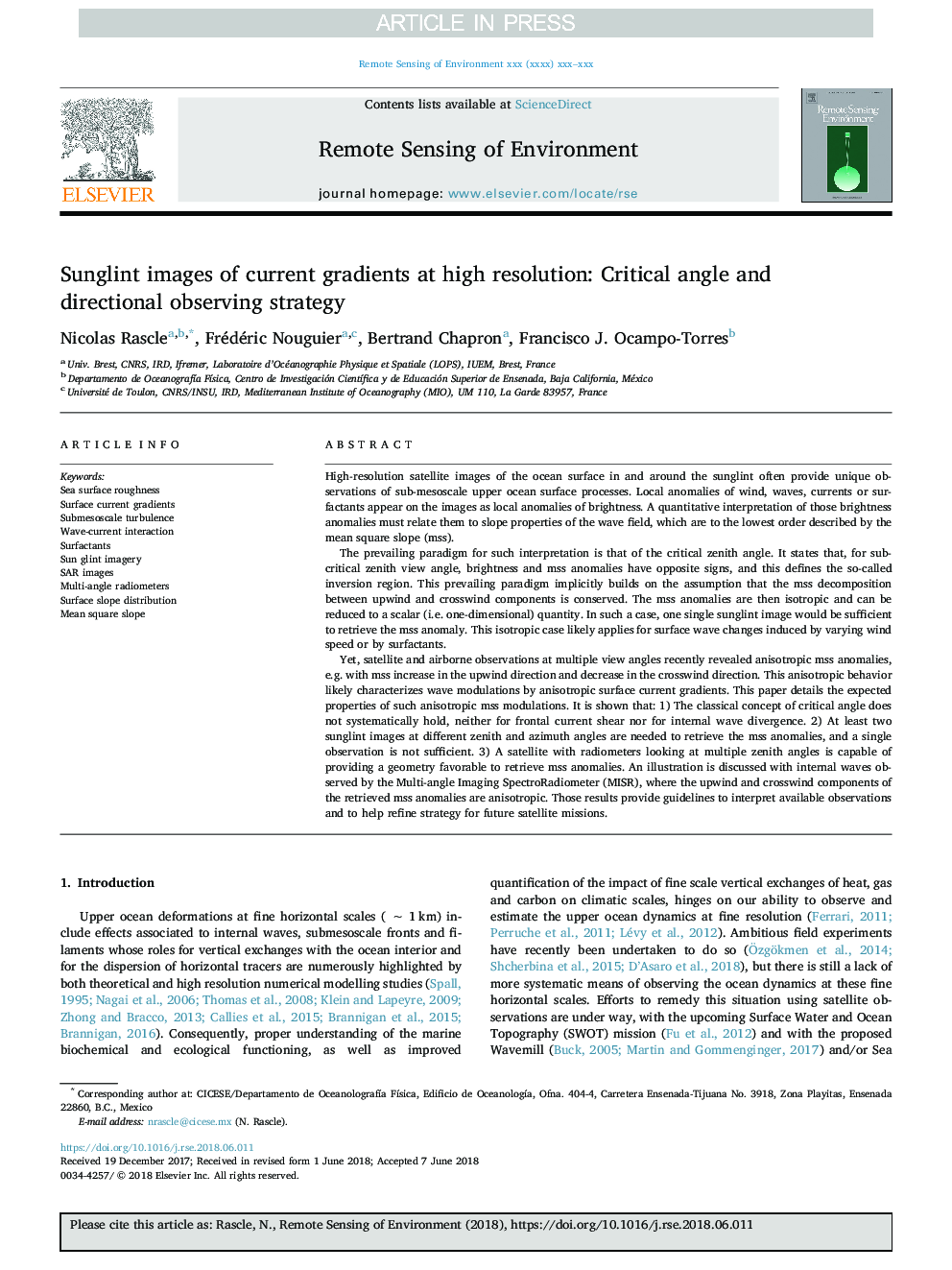| Article ID | Journal | Published Year | Pages | File Type |
|---|---|---|---|---|
| 8866453 | Remote Sensing of Environment | 2018 | 12 Pages |
Abstract
Yet, satellite and airborne observations at multiple view angles recently revealed anisotropic mss anomalies, e.g. with mss increase in the upwind direction and decrease in the crosswind direction. This anisotropic behavior likely characterizes wave modulations by anisotropic surface current gradients. This paper details the expected properties of such anisotropic mss modulations. It is shown that: 1) The classical concept of critical angle does not systematically hold, neither for frontal current shear nor for internal wave divergence. 2) At least two sunglint images at different zenith and azimuth angles are needed to retrieve the mss anomalies, and a single observation is not sufficient. 3) A satellite with radiometers looking at multiple zenith angles is capable of providing a geometry favorable to retrieve mss anomalies. An illustration is discussed with internal waves observed by the Multi-angle Imaging SpectroRadiometer (MISR), where the upwind and crosswind components of the retrieved mss anomalies are anisotropic. Those results provide guidelines to interpret available observations and to help refine strategy for future satellite missions.
Related Topics
Physical Sciences and Engineering
Earth and Planetary Sciences
Computers in Earth Sciences
Authors
Nicolas Rascle, Frédéric Nouguier, Bertrand Chapron, Francisco J. Ocampo-Torres,
